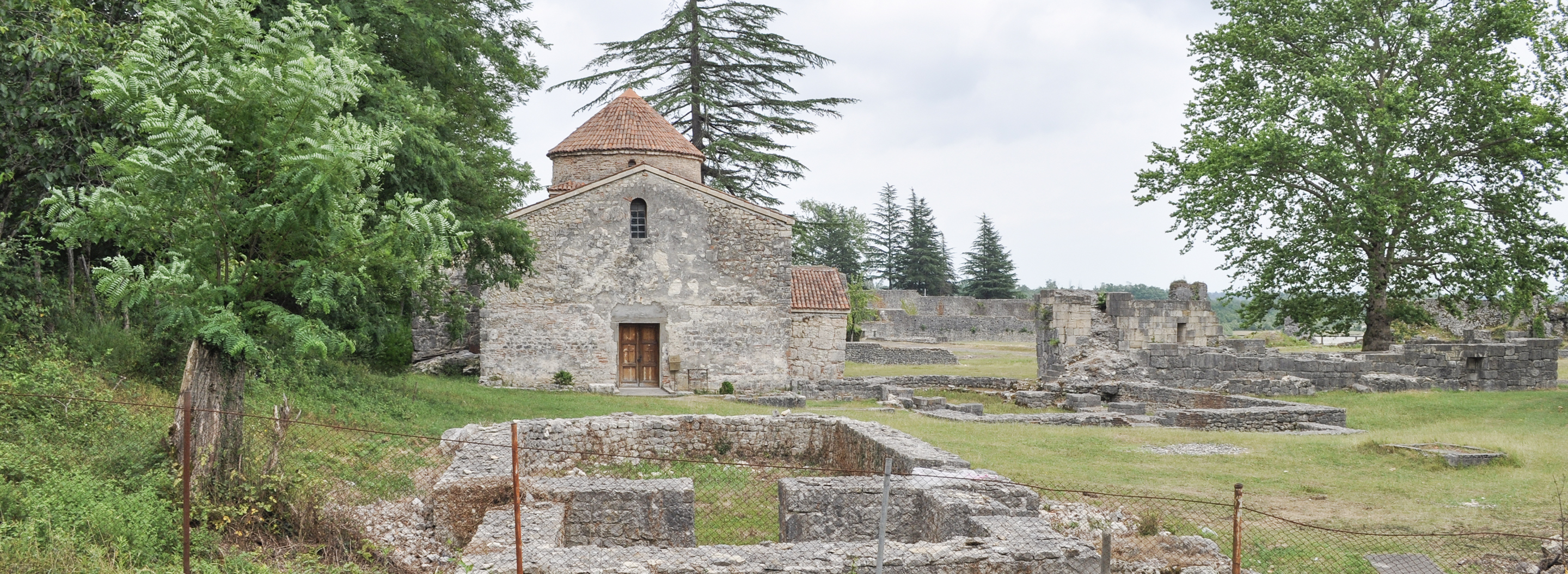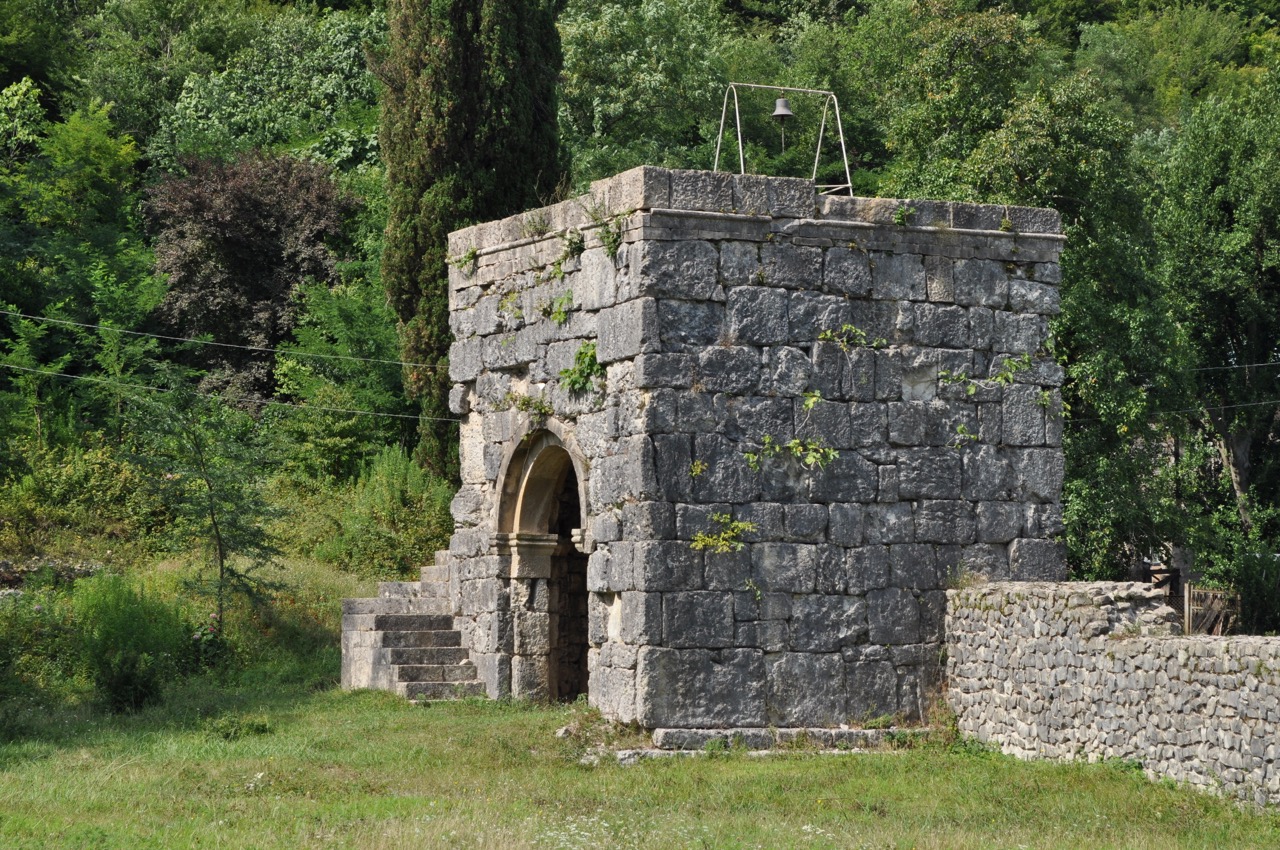
Feel free to add tags, names, dates or anything you are looking for

This archaeological site, located near the village of Nokalakevi in the Samegrelo province, boasts a rich history dating back to Antiquity. The first fort, known in Georgian chronicles as Tsikhegoji, is believed to have been established there as early as the third century BC. Over time, it evolved into a significant fortified city referred to by early Byzantine historians as Archaeopolis, and described as a "large and ancient fort" in Justinian’s Novels. Serving as the capital of the kingdom of Lazica from the fourth to eighth centuries AD, the city held considerable strategic importance.
_Large.jpeg)
View of the ruins of the lower city and citadel
Ancient Archaeopolis comprised a lower city and a citadel, both interconnected by defensive walls. The citadel, constructed from roughly cut stones, sits atop a craggy hill, while the lower city occupies a triangular plain along the banks of the Tekhuri River, surrounded on two sides by the steep bend of that river. The third side of the city was defended by large double walls bolstered with rectangular towers.
_Large.jpeg)
Defensive walls
Along with the huge fortification walls, with the main gate in the middle, the lower city preserves the ruins of palaces, baths, barracks, and three churches, two of which survive at ground level only, while the third was restored in the Middle Ages.
_Large.jpeg)
Ruins of the early Christian churches
The first church, built in the mid-fourth century, is single-nave. About a century later, the original church made way for a basilica with three pairs of piers and a projecting apse to the east, horseshoe-shaped in the interior, and five-sided outside.
_Large.jpeg)
Church of the Forty Martyrs and the ruins of the early Christian churches
The third church, built next to the second in the sixth century, has a sanctuary set up in a similar arrangement, but has only two pairs of piers, and differs in the proportions of its plan, which is almost square. After the Medieval reconstruction, it was crowned with a dome rising above a low circular drum. At present, it is dedicated to the Forty Martyrs. Its interior murals date back to the sixteenth century.
_Large.jpeg)
Ruins of the royal palace
Ruins of the sixth-century, three-storeyed royal palace can be seen to the south of the Church of the Forty Martyrs. An arched tower erected to the east once served as an entrance to the royal area. In the seventeenth century, it was rebuilt as a bell tower for the church. The belfry was destroyed in the Soviet period, and only the lower arched structure still stands, covered with a dome on pendentives.

Arched tower
In the western part of the lower city, there are the remains of a bathhouse. It is modelled after Roman bathhouses and is considered to have been designed for royalty. To the west of the bathhouse, a well-preserved hidden tunnel runs to the Tekhuri River. Its barrel vault is constructed of well-hewn large stones.

Staircase in the tunnel leading to the Tekhuri River
In 736, Archaeopolis was conquered and destroyed by the Arab commander Marwan ibn Muhammad, and was subsequently abandoned. In the seventeenth century, local princes from the Dadiani family built a two-storeyed palace there, but it seems this fell out of use from the early nineteenth century onwards. At present, only the lower parts of its walls, built of cobblestone, remain today.
Thanks to the mild climate, the ruins of the city had become lush with vegetation by the twentieth century. The site was cleared and archaeologically investigated in the 1970s and 80s.